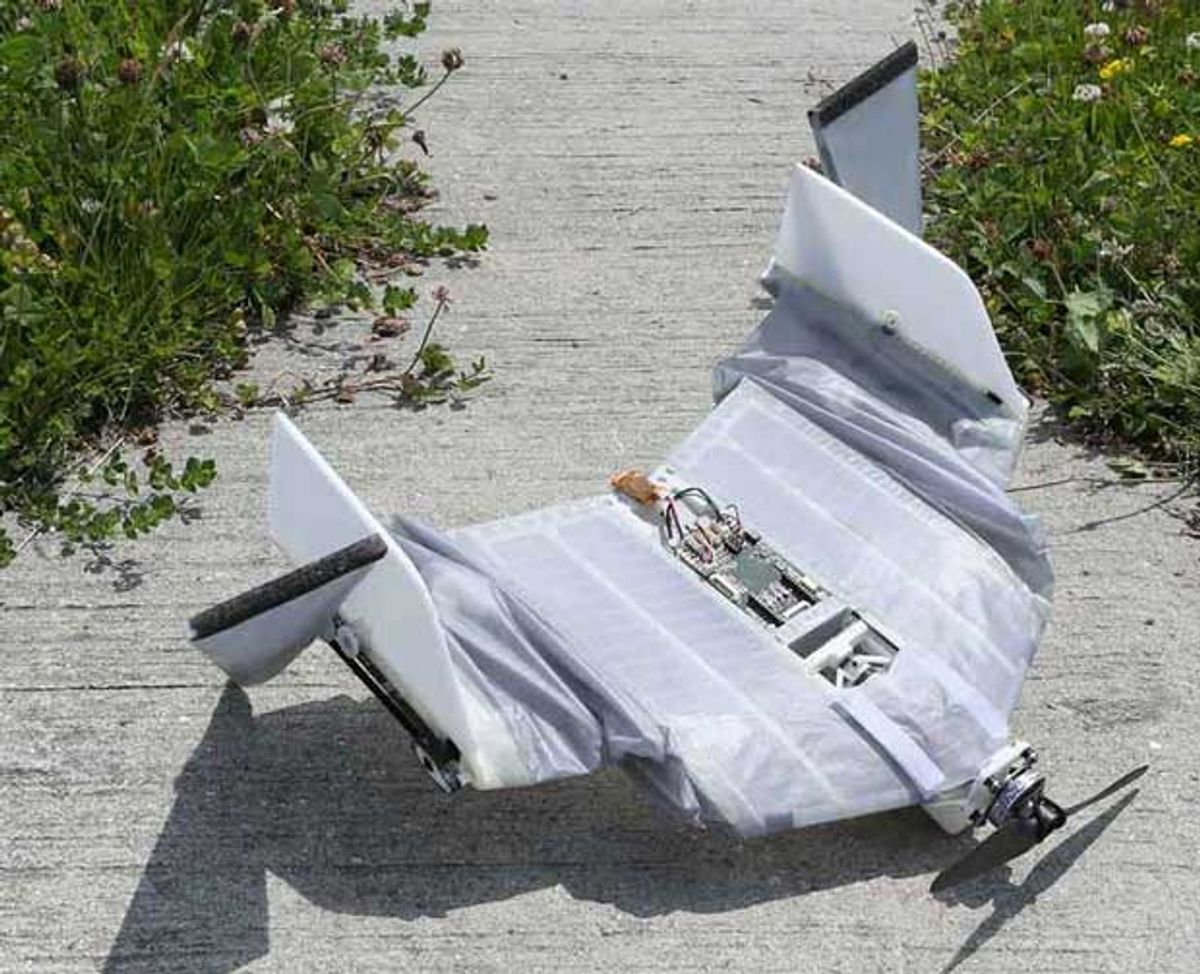A few years ago, Ludovic Daler showed us a flying robot that he was working on that had the ability to “walk” by rotating its wings while on the ground. We love seeing designs like this that are completely, utterly out of the box, and Ludovic promised even more:
We aim to make adaptive deployable wings... their shape could be adaptively modified to augment efficiency of forward flight, hover flight, and displacement on the ground.
With a little bit of inspiration from the common vampire bat (!), Ludovic has delivered with this updated robot that keeps its walking ability and now includes a foldable skeleton mechanism that lets it deploy and retract its wings.
The robot is called DALER (Deployable Air-Land Exploration Robot), and I’m sure it’s just a coincidence that Ludovic Daler is the lead author on a paper that’s just been published in Bionspiration & Biomimetics. The focus of the paper is, of course, the robot’s adaptive wings, which enable ground locomotion without sacrificing much weight or structural efficiency, since the rotating wingtips double as an attitude control system when the robot is in the air. The foldable wings (studying the bats helped out here) help to increase walking efficiency on the ground, and also allow the robot to squeeze into places that it might not otherwise be able to reach.
It’s obvious that DALER is, um, not the most graceful of robots when it’s stuck on the ground, but there’s a huge difference between the zero ground mobility that most aerial robots have and some ground mobility, however limited. For what it’s worth, bats operate the same way. In the air, DALER can reach 20 m/s, while on the ground, it tops out at 6 cm/s. It’s not going to get very far at 6 cm/s, but in a search and rescue scenario, the ability to move on the ground at all means that it can land and scramble around a little bit, maybe moving underneath obstructions to investigate areas that are otherwise inaccessible from the air.
The other appeal of ground mobility is that it gives a winged robot the capability to land, reorient itself, and then take off again. Rotary winged aircraft can do this, but they’re substantially less efficient over long distances. When a winged robot comes in for an autonomous landing, it’s usually better described as a controlled crash, and taking off without some form of assistance is usually impossible. DALER shouldn’t have this problem, and that’s where the research is heading next, according to EPFL:
Future development of the DALER will include the possibility to hover and to take off autonomously from the ground in order to allow the robot to return to the air and come back to base after the mission.
Evan Ackerman is a senior editor at IEEE Spectrum. Since 2007, he has written over 6,000 articles on robotics and technology. He has a degree in Martian geology and is excellent at playing bagpipes.



